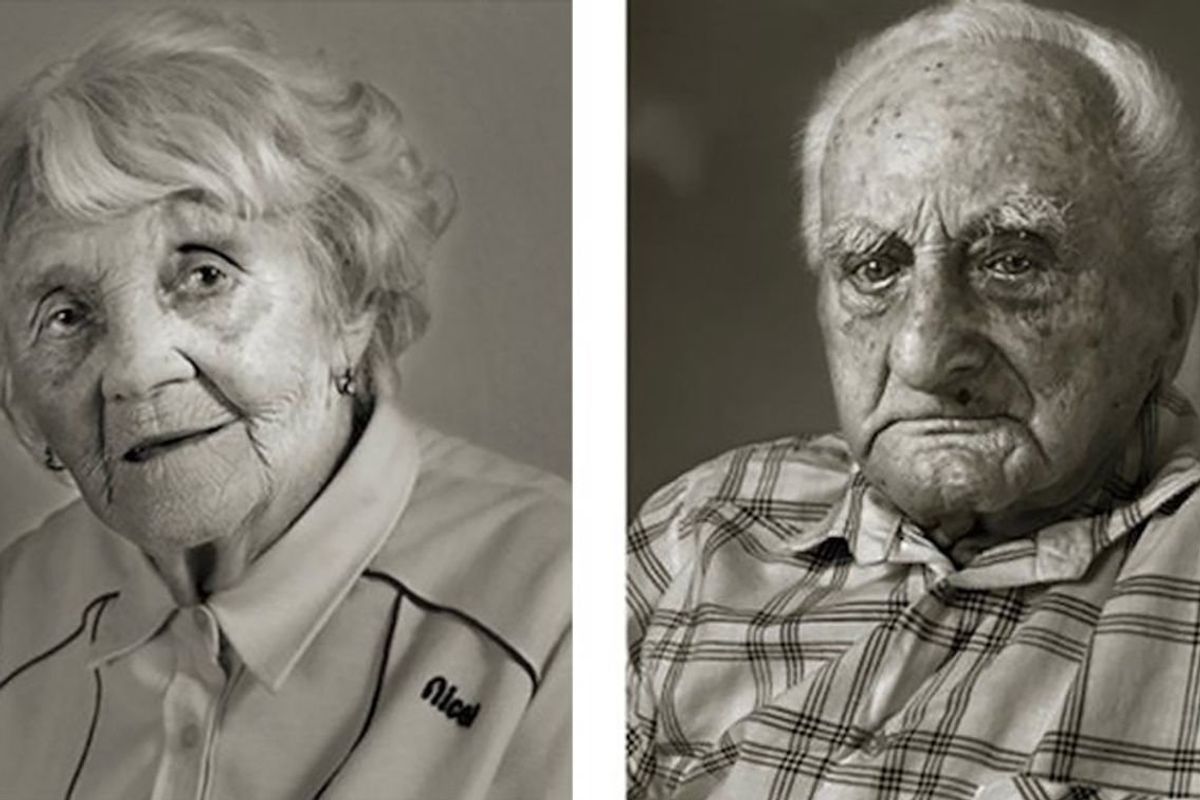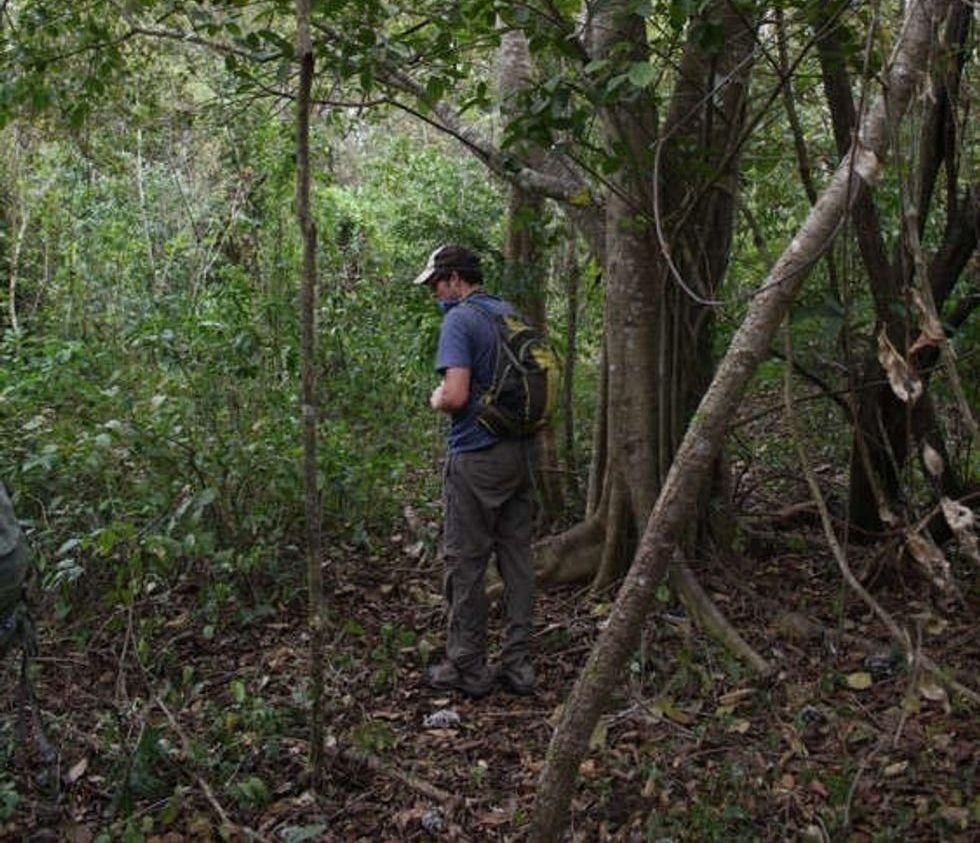A mini history lesson about the concentration camps on American soil.
74 years ago, a U.S. president ordered an entire ethnic group to be placed in concentration camps on U.S. soil.
During World War II, a young boy was forced from his home with his family, placed on a cramped train, and sent to an isolated camp across the country with no knowledge of when he would be able to return home. He and his family were confined to camps for years, solely on the basis of their ethnicity.
This isn’t the story of an inhumane atrocity that happened across an ocean or in another country. It happened on U.S. soil in 1942.
Kids boarding a bus for relocation in Byron, California. Photo via U.S. National Archives and Records Administration/Wikimedia Commons.
And the young boy in this story is George Takei, the "Star Trek" actor, who was one of more than 117,000 Japanese-Americans detained in U.S. concentration camps during the early 1940s. He talked about his experience on Democracy Now!:
"We had nothing to do with the war. We simply happened to look like the people that bombed Pearl Harbor. But without charges, without trial, without due process — the fundamental pillar of our justice system — we were summarily rounded up, all Japanese Americans on the West Coast, where we were primarily resident, and sent off to 10 barb wire internment camps — prison camps, really, with sentry towers, machine guns pointed at us — in some of the most desolate places in this country: the wastelands of Wyoming, Idaho, Utah, Colorado, the blistering hot desert of Arizona, of all places, in black tarpaper barracks. And our family was sent two-thirds of the way across the country, the farthest east, in the swamps of Arkansas."
Japanese internment is a dark period in America's history, but in many history classrooms, the camps are only touched on briefly — if at all.
American citizens receiving their instructions for deportation. Photo via U.S. National Archives and Records Administration/Wikimedia Commons.
In my public school U.S. history curriculum, the internment camps were just a couple of paragraphs in a textbook, and we didn't talk about it in class at all. During college and through my own research, I learned so much more about the camps and the people inside of them — and why it's still important to talk about them.
Here are four key things that you should know - but might not have learned - about the forced relocation of Japanese Americans on U.S. soil.
1. Japanese internment began Feb. 19, 1942, and most evacuees were detained in the camps for about three years.
On that day, President Franklin D. Roosevelt signed an executive order that paved the way for detainment and the relocation of Japanese-Americans. In the coming months, almost 120,000 West Coast residents were removed from their homes and sent to 10 camps across America.
The detainees were instructed to only bring belongings that could fit in one suitcase, and they were forced to leave behind their homes, businesses, and schools. Most of them had no idea if or when they would return. Can you imagine how terrifying that would be?
Most families didn't know where they were going or when they would come back. Photo via U.S. National Archives and Records Administration/Wikimedia Commons.
2. Most of the camps were isolated, and they lacked the resources and freedoms of the outside world.
The camps weren't fully constructed when the detainees were being evacuated, so some families were held in "assembly centers" like Tanforan, a racetrack. According to a survivor, they slept in horse stalls, didn't have access to running water or heat, and had limited access to bathrooms.
After Japanese-Americans were moved from the assembly centers to the more permanent camps, they usually lived in barracks, where there was limited privacy. The camps eventually had clinics and schools, but they were understaffed and under-resourced.
A notice informed Japanese-Americans they would be evacuated. Photo via U.S. government/Wikimedia Commons.
3. The detainees worked hard to make the camps feel like home.
Compared to the victims of the Nazi death camps, most of the people incarcerated in Japanese internment facilities had a much higher quality of life, and outright violence was rare. The detainees knew they wouldn't get to go home anytime soon, so they started making the camps their own.
Japanese-Americans wrote, published, and distributed their own newspapers in the camps. People who had been leaders in their communities pre-internment ran for elected office in their camp's community council. Young people put together bands and held dances. And even though most of the camps closed in 1945, survivors still meet periodically for reunions.
A community council holds a meeting in the Topaz, Utah, concentration camp. Photo via U.S. National Archives and Records Administration/Wikimedia Commons.
4. When the camps closed, many Japanese-Americans didn't — or couldn't — go back home.
In his interview, George Takei said that going back to California from the camp in Arizona was a "horrific, traumatic experience." Because the internment period devastated businesses owned by Japanese-Americans, many families lived in poverty in the years after the war. The families who were detained left almost everything behind, but there was very little to come back to.
"We lost everything. We were given a one-way ticket to wherever in the United States we wanted to go to, plus $20. And many people were very embittered about their West Coast experience, and they chose to go to the Midwest, places like Chicago or Milwaukee, or further east to New Jersey, New York, Boston. My parents decided to go back to Los Angeles. We were most familiar there. But we found that it was very difficult. Housing was impossible. They would deny us housing. Jobs were very, very difficult." — George Takei, via Democracy Now!
Fumi Hayashi recounted to the Oral History Archives Project: "I remember once around Christmas time, wondering when we'd ever get out of there. And it's sort of like, 'Does the government really hate me this much?' ... It's a hard thing to accept, and there's no answer." Photo via U.S. Library of Congress/Wikimedia Commons.
We want to think that something as terrible as uprooting and imprisoning an entire ethnic group could never happen in America, but it did. And it could happen again (just ask Donald Trump and his supporters).




 Generation Jones was born between 1954 and 1965.
Generation Jones was born between 1954 and 1965.
 Family moving into a new home.
Family moving into a new home.  Driving Road Trip GIF by Rosen Hotels & Resorts
Driving Road Trip GIF by Rosen Hotels & Resorts 
 Prokop Vejdělek, at age 22 and 101
Prokop Vejdělek, at age 22 and 101











 The first deposit of orange peels in 1996.
The first deposit of orange peels in 1996.  The site of the orange peel deposit (L) and adjacent pastureland (R).
The site of the orange peel deposit (L) and adjacent pastureland (R).  Lab technician Erik Schilling explores the newly overgrown orange peel plot.
Lab technician Erik Schilling explores the newly overgrown orange peel plot.  The site after a deposit of orange peels in 1998.
The site after a deposit of orange peels in 1998.  The sign after clearing away the vines.
The sign after clearing away the vines.